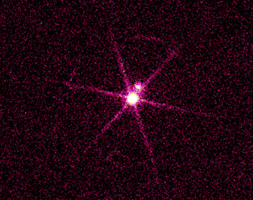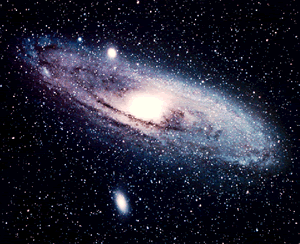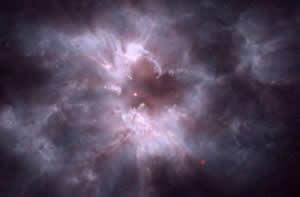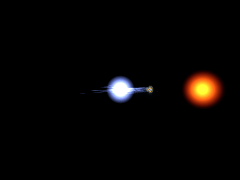An X-ray image of the Sirius star system. The bright source in this image is the white dwarf star Sirius B. The fainter x-ray source is Sirius A, the brightest visible star in the northern sky.
Click on image for full size
NASA/CXC/SAO
Click on image for full size
NASA/CXC/SAO
Sirius B - Bizarre White Dwarf Companion of Sirius A
| What's in a Name: | Nicknamed the "Pup" because it is the companion to Sirius, "the Dog Star" |
| Claim to Fame: | Highly compressed white dwarf remnant. Density about 50,000 times that of water. It has approximately the mass of the sun compressed into an object the size of the Earth. Swings around Sirius A every 50 years. First observed in 1862 by Alvin Clark. |
| Type of Star: | White dwarf |
| How Far Away: | 8.7 light years away (2.7 parsecs) |
| How Big: | Only three quarters as big as the Earth (2/100 of the sun's diameter, 0.9 times the solar mass) |
| How Bright: | 360 times fainter than the sun |
| Where to View: | In the constellation Canis Major (Star Map). |
| When to View: | Not visible with the unaided eye. Canis Major best viewed January through March |
Last modified January 31, 2005 by Travis Metcalfe.














